2. Implementation of the NPC's budget resolution
In accordance with the relevant resolutions of the First Session of the Twelfth NPC as well as the comments from the NPC's Financial and Economic Affairs Commission on the report on the implementation of the central and local budgets in 2012 and on the draft central and local budgets for 2013, we searched for ways to improve systems and mechanisms and strived to do public finance work well.
(1) Fiscal and tax policies were improved to facilitate changes in the growth model and structural adjustments.
We brought short-term regulatory policies in line with long-term development policies and accelerated economic transformation and upgrading.
First, we fully supported scientific and technological innovations. We optimized and integrated science and technology programs financed by the central government, and established a mechanism which gives state science and technology programs and major science and technology projects the go-ahead before funding is made available. We improved the policy on the trial establishment of national innovation demonstration zones, and extended the pilot reform to more selected institutions affiliated to the central government to allow them to transfer and profit from their scientific and technological advances for a longer period of time.
Second, we advanced industrial restructuring. We supported implementation of China's broadband strategy and IT projects that benefit the people. We encouraged new materials, high-end equipment, biomedicines, the modern seed industry and other areas to make breakthroughs in key technologies and collaborative innovations in industrial chains. We overhauled the fiscal and tax policies on new energy. We have allowed market forces to determine which enterprises will prosper and which will fall by the wayside so as to address overcapacity.
Third, we strengthened energy conservation and emissions reduction. The central government allocated funds for the prevention and control of air pollution. We promoted the demonstration and spread of cleaner production technology in industry and agriculture. We encouraged the use of energy-efficient products and accelerated the development of energy conservation and environmental protection industries. We reorganized special funds for the prevention and control of water pollution in the three rivers of Huai, Hai, and Liao and the three lakes of Tai, Chao, and Dianchi as well as the Songhua River; and for the protection of the ecosystems of lakes. We supported 492 counties in developing key eco-friendly functional zones.
Fourth, we supported foreign trade transformation and upgrading. We improved import and export tax policies: cutting the import tariffs on more than 780 types of goods, including advanced technology and equipment, key spare parts and components, and energy and raw materials; and introducing tariffs on the export of coal and other 300-plus types of resource products and products of which production is energy intensive or highly polluting. More funds were made available to offset interest paid on imports, and great efforts were put into expanding the import of certain goods.
(2) Attention was paid to the efficient use of investment in the people's livelihood.
We effectively implemented policies on improving the people's livelihood whilst ensuring sustainable public finance: we kept to the bottom line, set priorities, improved systems, and guided public opinion. We evaluated key expenditures on improving the people's livelihood; established a mechanism for coordinating the efforts of the government, businesses, individuals, and society; and cultivated the idea of everyone working hard, all sectors of society sharing responsibility, and getting rich through hard work. We steadily built up systems for improving people's well-being on the basis of determining how public programs for this purpose are, and encouraged the use of nongovernmental capital in such programs. We selected special transfer payments for employment subsidies and renovation of rundown rural houses to assess their results and established a sound mechanism for evaluating key expenditures on the people's livelihood.
(3) Budgetary management was strengthened.
First, we improved the compilation of budgets and the management of their implementation. We made departmental budgets more detailed, further cut down the size of expenditure budgets compiled by finance departments for relevant departments and projects, and strictly controlled adjustments to items being executed. We established a sound, dynamic system for monitoring the execution of budgets at all levels of government and carried out trials to digitize centralized treasury payment in selected areas. We introduced a list of expenditure items requiring settlement by the use of government credit cards and are promoting the wider acceptance of these cards by commercial outlets.
Second, we accelerated efforts to manage budgets more effectively. We applied performance-based budget management to more government departments and to more funds. The central government focused on evaluating the performance of some projects funded by special transfer payments and the management of expenditure at the county level. It also explored ways to release evaluation results, hold admonitory talks on performance, reward good performance and sanction poor performance and other ways to make use of performance evaluation results. Local governments also showed their eagerness to manage their budgets more effectively.
Third, we strengthened management of local government debt. We obtained a rather clear picture on how much local government debt there is, gave warnings to regions with high amounts of debt, and strengthened debt management and risk prevention and control. More local governments were selected to begin issuing their own bonds on a trial basis that the central government would pay off. We brought financing done through land reserve institutions into local government debt management and imposed a ceiling on its annual size. More governments began to prepare comprehensive financial reports on a trial basis.
Fourth, extensive efforts were made to release budgets and final accounts. The released budgets and final accounts of the central government and its departments were more detailed. The budgets of all the central government' s departments were made public together in April, and their final accounts were made public together in July. More detailed budgets for central government departments' spending on official overseas visits, official vehicles, and official hospitality were released in April together with their other budgets, instead of July when such budgets used to be made public together with these departments' final accounts. We got more governments at and below the provincial level to disclose their budgets and final accounts: General fiscal budgets at the provincial level and departmental budgets of provincial-level organs responsible for preparing budgets were disclosed in the country's 31 administrative areas, and budgets and final accounts for the spending on official overseas visits, official vehicles, and official hospitality at the provincial level were made public in most provinces, autonomous regions, and municipalities under the central government.
(4) Fiscal and tax reforms were accelerated.
In light of the principle of carrying out reform step by step in accordance with the top-level design, we lost no opportunity to introduce a series of reform measures while working out a master plan to deepen fiscal and tax reforms. The pilot project to replace business tax with VAT in the transportation industry and some modern service industries was carried out across the country successfully, thereby reducing the tax load on businesses by more than 140 billion yuan for the year and helping develop the service industry and optimize the industrial structure. We implemented a trial reform of levying price-based taxes on some resources. We abolished or delegated a number of financial items subject to administrative review and approval. We have unveiled guidelines for government procurement of public services from nongovernmental sectors and actively organized and carried out this work. We studied and defined our ideas and plan for reviewing and straightening out special transfer payments from the central government, reduced a number of special transfer payments, and delegated the authority of review and approval over certain items to lower levels. We supported Heilongjiang Province in launching a pilot project to combine funds concerning agriculture, rural areas, and farmers for the Songnen and Sanjiang plains. We encouraged provincial-level governments to review and integrate their transfer payments to governments at lower levels in light of their actual conditions.
(5) Every area was economized.
We faithfully complied with the Party Central Committee's eight-point regulations and cut regular expenditures of the central government by 5%, with the funds saved transferred to the Central Budget Stabilization Fund for future budgetary purposes. Local governments also reduced their spending accordingly. We have strengthened the system to stringently economize and curb waste. Focusing on implementing the Regulations on Practicing Thrift and Opposing Waste in Party and Government Bodies, we formulated measures for managing expenditures of the bodies of the CPC Central Committee and the central government on meetings, training, business travel, hospitality for foreign guests, temporary overseas trips, short-term overseas training and other official business purposes, thus making the system more operational and authoritative and providing a foundation for establishing a sound, permanent mechanism.
 |  |

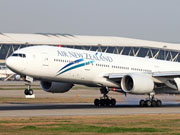 Top 10 safest airlines in the world
Top 10 safest airlines in the world Bridge Worship Festival in Taijiang, SW China
Bridge Worship Festival in Taijiang, SW China 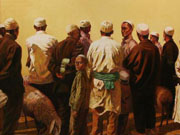 Chinese artists from Flight MH370 and their art
Chinese artists from Flight MH370 and their art Selected photos of 'two sessions'
Selected photos of 'two sessions' Most unusual taxis around the world
Most unusual taxis around the world Sweet photos of mom striking Yoga poses with daughter
Sweet photos of mom striking Yoga poses with daughter Top 10 pure beauties in showbiz
Top 10 pure beauties in showbiz Top 20 happiest cities in China
Top 20 happiest cities in China Beautiful fisherwomen in SE China
Beautiful fisherwomen in SE China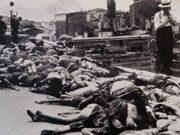 History in photos: Anti-Japanese War (1937-1945)
History in photos: Anti-Japanese War (1937-1945)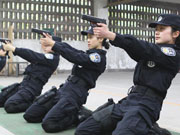 Female SWAT team in Chongqing
Female SWAT team in Chongqing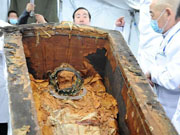 1,500-year-old coffin excavated from grassland in N China
1,500-year-old coffin excavated from grassland in N China Ballerinas anywhere but onstage
Ballerinas anywhere but onstage
Day|Week|Month